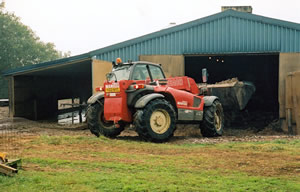
Where there’s muck there’s money. And now DEFRA has started spelling out just how much cash the contents of a droppings pit can be worth. And at £83 per hectare, the answer is probably a lot more than you thought. The facts are revealed in a new series of booklets called ’Making The Most of Manure’ which point out that maximising the efficient use of muck not only benefits the bank account but also the environment because of the reduced danger of pollution.
The key, of course, is establishing just what nutrients are in the muck in the first place. The only truly accurate way of doing this is by analysis but DEFRA has produced ’standard values’ based on a series of tests. These show that every ton of layer manure which has a dry matter of 30% contains 16 kilos of nitrogen, 13 of phosphorous and 9 of potassium. The figures for litter, with 60% DM, are 30, 25 and 18 respectively. But a crucial factor is how much of these nutrients are made available to the next crop to be grown after application.
Autumn and winter applications of poultry manures will make between 10-25% of the total N available to the next crop depending on the soil type. But a spring application will make 35% available on grassland and up to 50% on arable land where rapid incorporation or deep injection is used.
The DEFRA experts strongly recommend the Spring as the key time to apply poultry manures not only because of these figures but because much less nitrogen is lost to the atmosphere as ammonia (which contributes to acid rain) or in leaching (which pushes up groundwater nitrate levels). If poultry manure is applied in September, over 25% of N can be lost through leaching. In January the figure plunges to just 1 or 2%.
The cash value of the muck in the pit is calculated by taking all of this into account. It also assumes an application rate of 12.5 tons per hectare which will supply 70 kg/ha of nitrogen or 50-60% of the total N requirement of a silage crop. On this basis the experts say your muck will save £44/ha in nitrogen, phosphorous and potassium on the first cut of silage and a further £39/ha on later cuts. A similar calculation for broiler litter applied in the spring to main crop potatoes shows a muck value of £154/ha.
With changes to organic rules that make manure and its disposal a critical issue in stocking rates, this a subject that will receive increasing attention. But even for non-organic producers it is clearly an issue worth taking seriously. The three DEFRA booklets which cover arable, grassland and spreading systems are a useful starting point. They are not just informative and user friendly they are also free. Copies are available from DEFRA Publications, Admail 6000, London SW1A 2XX. Tel: 0645 556000.
